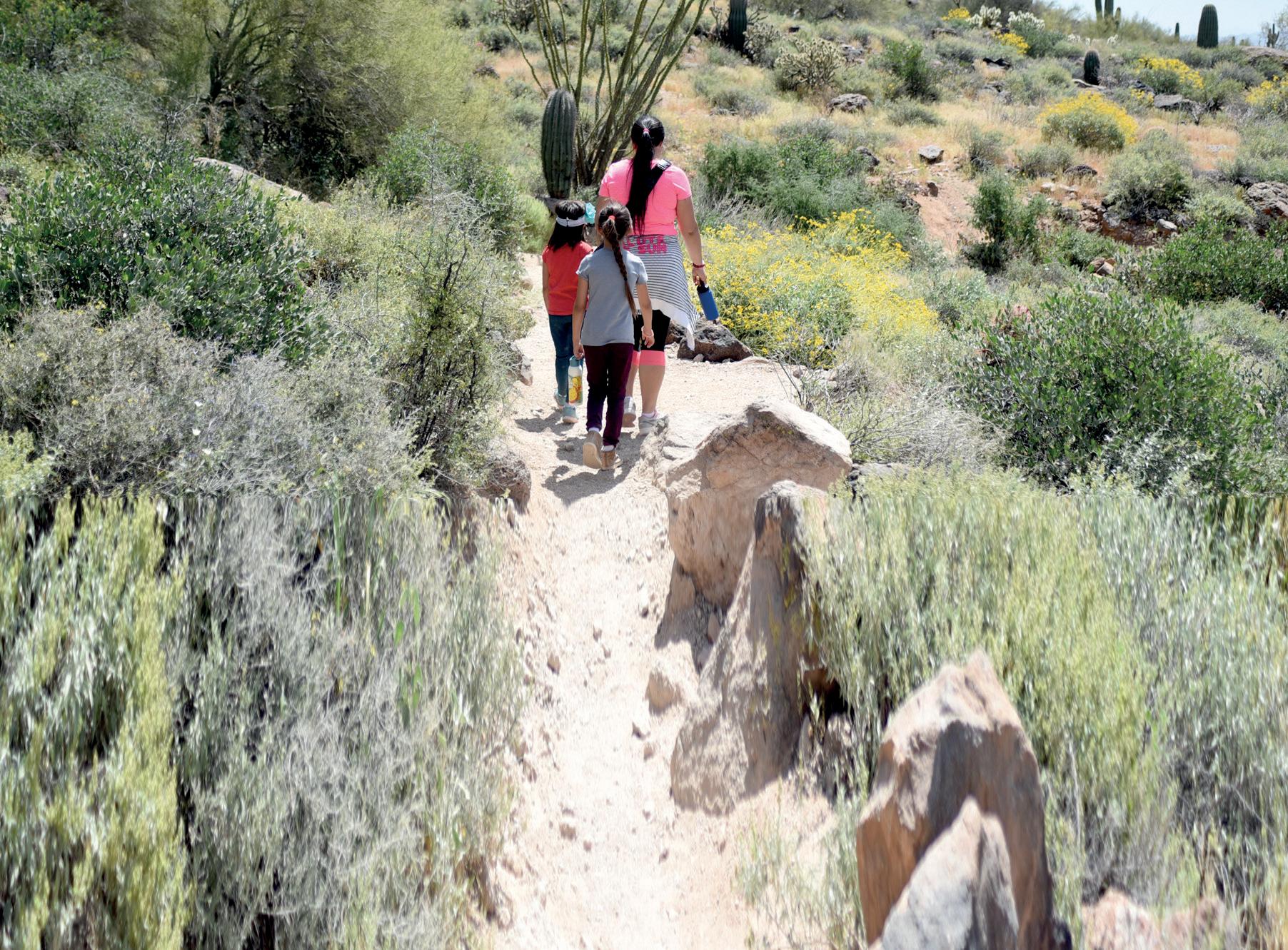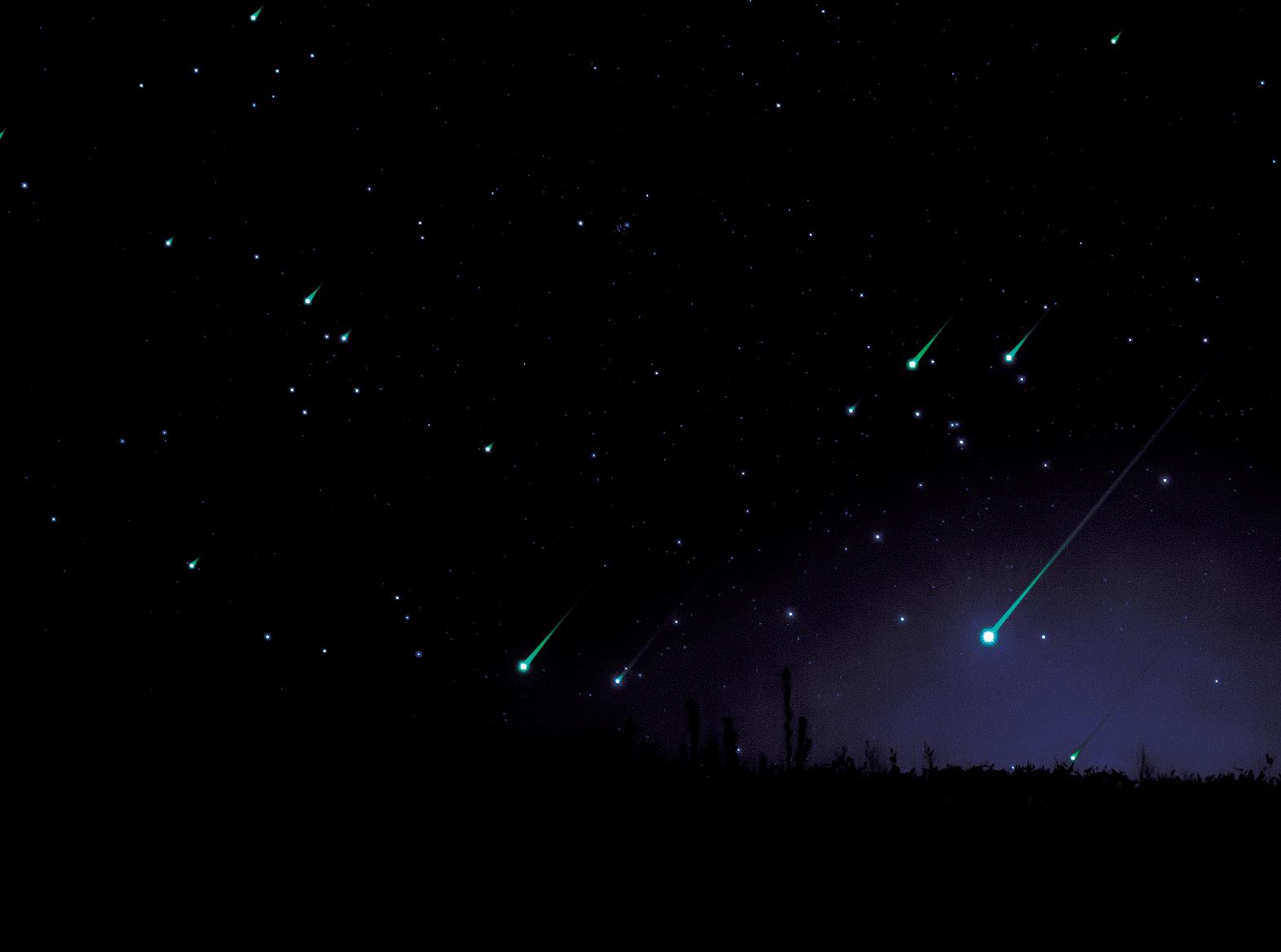
4 minute read
HIKE ARIZONA & NIGHT SKY
ARIZONA
CATALINA CANYON LOOP
Distance: 2.3 miles | Elevation: 173 feet | Route: Loop | Difficulty: Moderate Possible state park charge
Hiking in the Arizona desert is always beautiful. Lucky for us this time of year, hiking is everso enjoyable. It is not hot and it is not cold. Our weather is ideal for outdoor activities. The Catalina Canyon Loop Trail may be something you would like to try. This hike is a fun well defined trail. You will see an assortment of cacti and desert shrubs, but most of all the views of the rugged mountain ridges will be amazing. As the hike continues, you will drop into a wash bed that you will cross four times. You may be lucky enough to see some water flow, however use caution when crossing. Even though the weather is cooler that some of our desert creatures sleep during this time there is always a chance you may cross paths. Keep an eye out. As always, hike with plenty of water and a snack if needed.
If you were headed North on Oracle rd (HWY 77) a couple miles past 1st ave. but before you get to Tangerine Rd. make a right into Catalina State Park. You should see a sign for the park. Head east until you come to the Ranger Station, there is a $7.00 daily fee. Continue east until you see the parking lot, and a few feet south of the parking lot is the trailhead.
DECEMBER
• December 8 - Full Moon. The Moon will be located on the opposite side of the Earth as the Sun and its face will be fully illuminated. This phase occurs at 04:09 UTC. This full moon was known by early Native American tribes as the Cold Moon because this is the time of year when the cold winter air settles in and the nights become long and dark. This moon has also been known as the Long Nights Moon and the Moon Before Yule.
• December 8 - Mars at Opposition. The red planet will be at its closest approach to Earth and its face will be fully illuminated by the Sun. It will be brighter than any other time of the year and will be visible all night long. This is the best time to view and photograph Mars. A medium-sized telescope will allow you to see some of the dark details on the planet's orange surface.








